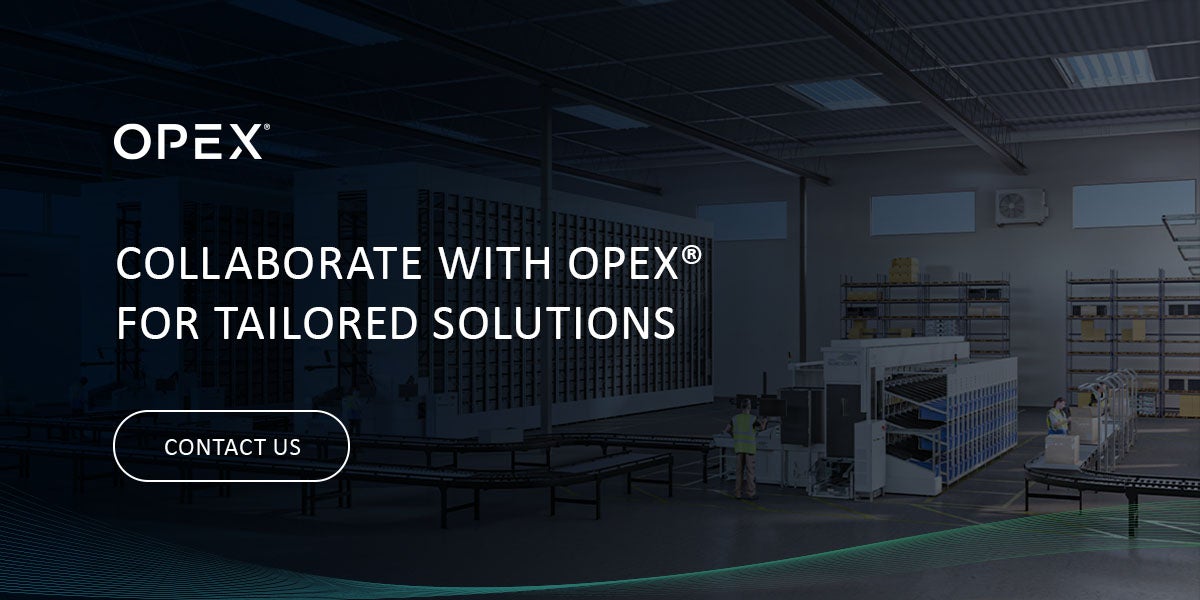Investing in Sustainability: Addressing the Cost Barrier and Seeking Government Support
5 min read
60-Second Summary
Sustainability is a growing priority for warehousing and logistics operations in the UK, but high upfront costs remain a major barrier to action. While long-term savings from energy-efficient automation and fleet decarbonisation are proven, many businesses, especially small and medium-sized enterprises (SMEs), struggle to invest without external support. The industry is calling for clearer policy roadmaps, targeted grants, and public infrastructure funding to bridge the gap. Some support is available now, including EV grants, full expensing for equipment, and energy transformation funding. With the right tools and government backing, green logistics can become both achievable and profitable.
The High Stakes of Green Logistics
Sustainability has moved beyond being a luxury in logistics for the UK. As pressure mounts from customers, regulators, and investors, reducing environmental impact has become a core operational goal. From fleet electrification to energy-efficient warehousing, the logistics industry is expected to deliver results.
But behind the drive toward greener operations lies a very real concern: Cost.
The financial hurdle remains one of the largest barriers for logistics and warehousing companies wanting to invest in sustainable technologies and practices. Although these investments can deliver long-term savings and resilience, the initial outlay is often daunting, especially in a sector already under pressure from tight margins, rising fuel prices, and ongoing talent shortages.

The True Cost of Sustainability in Logistics
Workforce shortages create cascading operational effects. Reduced staffing directly translates to slower processing times, extended delays, and significant backlogs during peak periods. Overworked staff make more errors, affecting quality and customer satisfaction, whilst remaining employees face burnout that creates further attrition cycles.
Implementing green initiatives can be capital-intensive. A few examples illustrate why:
- Fleet decarbonisation (shifting to electric vehicles (EV) or hydrogen-powered trucks) can cost two to three times more than traditional diesel vehicles.
- Charging infrastructure remains limited and expensive to install, particularly in rural or high-demand urban areas.
- Retrofitting warehouses to meet energy efficiency standards often involves upgrading lighting, heating, insulation, and possibly installing solar panels or smart energy systems.
- Scope 3 emissions tracking (emissions generated across the supply chain) is complex and requires sophisticated software and significant administrative overhead.
The result? Many operators, especially small and medium-sized enterprises (SMEs), view sustainability as a luxury they cannot afford, despite the reputational and environmental benefits.
Why the Cost Barrier Matters
Cost is more than just a number: it shapes how, when, and whether businesses take action. Without accessible funding models, many logistics businesses delay or abandon green upgrades. This creates a two-speed market where larger operators with access to capital move ahead, while smaller firms risk being left behind.
This disparity undermines not only sector-wide decarbonisation goals but also competition and innovation. It can also lead to compliance challenges as new regulations come into force.
The Regulatory Landscape: Deadlines Without Direction
UK regulations are increasingly aligned with net-zero ambitions. The upcoming tightening of MEES (Minimum Energy Efficiency Standards) is a clear example:
- Current requirement: Commercial properties must meet at least an Energy Performance Certificate (EPC) rating of E.
- By 2027: This rises to EPC rating C.
- By 2030: Warehouses must reach EPC rating B.
For many warehouse operators, these upgrades aren’t optional. Yet, there is little in the way of coordinated support to help cover the costs.
Fleet operators also face pressure. The government’s commitment to banning the sale of new petrol and diesel vehicles by 2035 is pushing logistics providers to consider electric and alternative-fuel fleets. However, the infrastructure is not keeping pace, especially in logistics-intensive regions with inadequate grid support.
The Business Case Still Holds – But It’s Not Enough
Despite the cost, the long-term ROI of sustainable investments remains strong. Energy-efficient automation, AS/RS, and smart sorting systems reduce operational costs through:
- Lower energy use
- Fewer returns (due to improved order accuracy)
- Reduced manual labour costs
- Higher throughput with the same or fewer staff
These gains are real. However, they don’t erase the fact that most businesses still require assistance in covering the upfront costs.
Even advanced sustainability strategies, such as warehouse electrification or robotics-enhanced fulfillment, which reduce emissions and boost efficiency, often require long payback periods, especially for operators without scale.
Industry’s Call for Government Intervention
Many within the UK logistics industry are now clear: businesses cannot do this alone. There’s a growing demand for:
1. Clear, Sector-Specific Policy Roadmaps
Businesses want clarity on what’s expected and when. This means not just general carbon reduction targets, but logistics-specific guidance that takes into account the operational realities of the sector.
Operators are seeking timelines, benchmark standards, and best practice models that they can incorporate into their long-term planning.
2. Grants and Financial Incentives
Targeted support is needed to offset the high cost of adoption. Key proposals from the industry include:
- Capital allowances for sustainable warehouse upgrades
- Grants or low-interest loans for EV fleet purchases and charging infrastructure
- Financial support for implementing automated sortation and energy-efficient technologies
The goal is to de-risk early adoption and make the ROI more achievable, especially for SMEs that form the backbone of the UK’s warehousing sector.
3. Public Infrastructure Investment
Many sustainable logistics strategies require shared infrastructure. This includes:
- EV charging and hydrogen fueling networks
- Solar grid connections
- Regional freight consolidation hubs
Without government investment in public logistics infrastructure, private investment will remain fragmented and unevenly distributed.
4. Innovations Funds and Pilot Programmes
Supporting trial programmes and pilot projects for green warehousing and transport innovations would accelerate adoption and de-risk innovation. This can be especially helpful for high-impact technologies like:
- Fully automated fulfilment systems
- Robotics-powered sorting with self-charging capabilities
- AI-driven climate control and smart grid integration
Strategies for Moving Forward Without Breaking the Bank
Despite these challenges, there are practical steps operators can take to make progress on sustainability, even without major capital outlay. These include:
1. Modular Automation
2. Energy Audits and Efficiency Tweaks
3. Green Leasing Models
4. Collaborating Across the Value Chain
Current Government Support Available
1.Plug-in Van and Truck Grants
- What it offers: Up to £5,000 off small vans and £16,000 off large trucks (over 12 tonnes) when purchasing qualifying electric vehicles.
- Who qualifies: Businesses purchasing eligible zero-emission commercial vehicles.
- Administered by: Office for Zero Emission Vehicles (OZEV).
- More info: GOV.UK – Plug-in vehicle grant
2. Super-Deduction and Full Expensing (Until 2026)
What it offers: Businesses can deduct 100% of qualifying plant and machinery investments (including automation equipment and energy-efficient systems) from their taxable profits.
Who qualifies: UK-based companies investing in capital assets such as warehouse automation, robotics, or energy-efficient machinery.
Benefit: Immediate tax relief for sustainable infrastructure investments.
More info: Tax Foundation Europe
3. Industrial Energy Transformation Fund (IETF)
What it offers: Match-funded grants for projects that improve energy efficiency or switch to low-carbon technologies.
Who qualifies: Energy-intensive businesses (including warehousing) in England, Wales, and Northern Ireland.
Focus: Heat recovery, process automation, and electrification of fossil fuel systems.
More info: IETF guidance
4. Clean Heat Grant (Transitioning to Boiler Upgrade Scheme)
What it offers: Grants of £5,000–£6,000 for installing low-carbon heating systems, like air-source or ground-source heat pumps.
Who qualifies: Applicable to non-domestic buildings in some cases (especially warehouses with office sections).
Limitations: Best suited for new builds or warehouse office upgrades.
More info: The Clean Heat Grant
The Role of Policy in Leveling the Playing Field
Left to the free market, green transformation will occur unevenly. Larger players with deeper pockets will pull ahead, while others will be left to navigate fragmented regulations and inaccessible funding.
But with the right policy framework, the government can level the playing field, giving smaller operators a fighting chance to adopt best practices and contribute to sector-wide emission reductions.
This matters not just for environmental reasons, but for the long-term competitiveness and resilience of the UK’s supply chain.
Looking to reduce emissions, cut operating costs, and future-proof your warehouse or logistics operation? Contact us today to start your journey toward greener, more efficient logistics.
Other Resources You Might Find Helpful
NEXT LEVEL AUTOMATION
Unlock Operational Efficiency with OPEX
OPEX is powering the future of automation. Contact us to learn more about how our vertically integrated automated solutions can help take your business to new heights.

